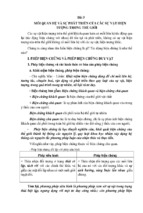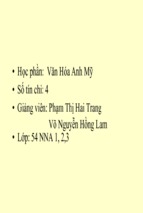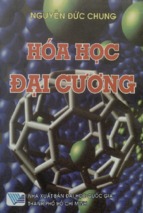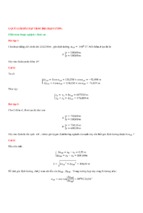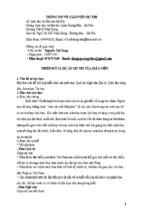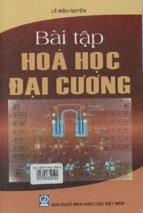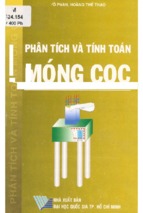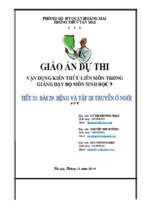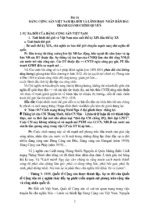Downloaded from ascelibrary.org by RMIT UNIVERSITY LIBRARY on 01/03/19. Copyright ASCE. For personal use only; all rights reserved.
International Conference on
Sustainable Infrastructure
2017
METHODOLOGY
Proceedings of the International Conference
on Sustainable Infrastructure 2017
> New York, New York
> October 26–28, 2017
EDITED BY
Lucio Soibelman, Ph.D.
Feniosky Peña-Mora, Sc.D.
Downloaded from ascelibrary.org by RMIT UNIVERSITY LIBRARY on 01/03/19. Copyright ASCE. For personal use only; all rights reserved.
INTERNATIONAL CONFERENCE ON
SUSTAINABLE INFRASTRUCTURE
2017
METHODOLOGY
PROCEEDINGS OF THE INTERNATIONAL CONFERENCE ON
SUSTAINABLE INFRASTRUCTURE 2017
October 26–28, 2017
New York, New York
SPONSORED BY
Committee on Sustainability of the American Society of Civil Engineers
EDITED BY
Lucio Soibelman, Ph.D.
Feniosky Peña-Mora, Sc.D
RESTON, VIRGINIA
Downloaded from ascelibrary.org by RMIT UNIVERSITY LIBRARY on 01/03/19. Copyright ASCE. For personal use only; all rights reserved.
Published by American Society of Civil Engineers
1801 Alexander Bell Drive
Reston, Virginia, 20191-4382
www.asce.org/publications | ascelibrary.org
Any statements expressed in these materials are those of the individual authors and do not
necessarily represent the views of ASCE, which takes no responsibility for any statement
made herein. No reference made in this publication to any specific method, product, process,
or service constitutes or implies an endorsement, recommendation, or warranty thereof by
ASCE. The materials are for general information only and do not represent a standard of
ASCE, nor are they intended as a reference in purchase specifications, contracts, regulations,
statutes, or any other legal document. ASCE makes no representation or warranty of any
kind, whether express or implied, concerning the accuracy, completeness, suitability, or
utility of any information, apparatus, product, or process discussed in this publication, and
assumes no liability therefor. The information contained in these materials should not be used
without first securing competent advice with respect to its suitability for any general or
specific application. Anyone utilizing such information assumes all liability arising from such
use, including but not limited to infringement of any patent or patents.
ASCE and American Society of Civil Engineers—Registered in U.S. Patent and Trademark
Office.
Photocopies and permissions. Permission to photocopy or reproduce material from ASCE
publications can be requested by sending an e-mail to
[email protected] or by locating a
title in ASCE's Civil Engineering Database (http://cedb.asce.org) or ASCE Library
(http://ascelibrary.org) and using the “Permissions” link.
Errata: Errata, if any, can be found at https://doi.org/10.1061/9780784481196
Copyright © 2017 by the American Society of Civil Engineers.
All Rights Reserved.
ISBN 978-0-7844-8119-6 (PDF)
Manufactured in the United States of America.
International Conference on Sustainable Infrastructure 2017
Preface
THE CHALLENGE
Downloaded from ascelibrary.org by RMIT UNIVERSITY LIBRARY on 01/03/19. Copyright ASCE. For personal use only; all rights reserved.
The 2017 International Conference on Sustainable Infrastructure focused on developing
roadmaps to address the UN Sustainability Goals of developing Sustainable cities and
building resilient infrastructure as well as the NAE Grand Challenge to "restore and
improve urban infrastructure," all while supporting the ASCE Grand Challenge of "how
we can work together towards the shared goal of reducing life cycle costs by 50% by
2025 and foster the optimization of infrastructure for society."
THE ASCE
The American Society of Civil Engineers (ASCE) is respected worldwide for bringing to
the forefront new ideas and critical concepts and technical knowledge on subjects of
importance to the civil engineering professions and the public and private clients that
civil engineers serve. Specialty conferences of the ASCE, such as ICSI2017, bring
together, educate and inform the diverse civil engineering community, including
practitioners, public and private infrastructure owners, policy makers, researchers,
graduates and engineering students. The workshops, keynote lectures, panel discussions
and tours broadened our understanding of research underway and best practices in the
field.
THE CONFERENCE
The International Conference on Sustainable Infrastructure for an Uncertain World
addressed what we know about an uncertain future, and probed the edges of what we do
not know. Uncertainty prods engineers to go deeper, seek higher, and initiate research
collaborations to assure that the best efforts can be brought together to combat the impact
of climate change and energy unpredictability.
THE GOALS
These proceedings fulfill a primary purpose of the ICSI2017 conference: to assemble,
deliver and disseminate a cogent and comprehensive assessment of he current state of
sustainable infrastructure in an uncertain world. Local and global decision-making on
energy policy, infrastructure maintenance, enhancement and replacement and investments
in hydrology and transit were discussed and debated by experts from around the world.
Those working to maintain and improve infrastructure performance in a rapidly changing
operating environment face difficult and unprecedented challenges pertaining to lack of
predictability, both fiscal and political. Civil engineers and allied professionals working
for progressive public and private clients are able to take the long view in regards to the
systems and public space that helps define the success of world class cities, from New
© ASCE
iii
International Conference on Sustainable Infrastructure 2017
York to Paris, and Shenzhen to Montreal. To constructively provide infrastructure
solutions to emerging needs, and responses that transcend electoral vicissitudes or
geographic determinants, a broad, more long-ranging perspective becomes the
cornerstone of the civil engineering profession's values and value.
Downloaded from ascelibrary.org by RMIT UNIVERSITY LIBRARY on 01/03/19. Copyright ASCE. For personal use only; all rights reserved.
THE SPEAKERS
This conference began with an emphasis on the role of cities and metropolitan areas, with
keynote speakers that included some of the most distinguished luminaries from the civil
engineering academic and professional communities. They were complemented by two
strong and pragmatic voices for grand visions and reinventing the possible: New York
City's First Deputy Mayor Anthony Shorris and Paris Deputy Mayor Jean-Louis Missika.
THE TECHNICAL SESSIONS
The technical sessions address issues of methodology, technology, finance, policy and
education while describing case studies, projects, research and lessons learned about
sustainability, resilience and social equity.
THE PUBLICATION
This publication includes all papers presented by the authors in the plenaries, the
technical sessions and concurrent poster sessions. The technical papers range from five to
twelve pages and describe in significant detail the results and findings from both research
and practice-oriented projects of broad interest to the civil engineering community. Case
studies are also included. Each of the papers accepted for podium or poster presentation
received a detailed review and evaluation by members of the Steering and Advisory
Committees. The papers published in this proceeding are organized on 3 main areas: (1)
Technology, (2) Policy, Finance, and Education, and (3) Methodology.
Acknowledgments
The editors of this publication, on behalf of the American Society of Civil Engineers and
the ICSI2017 Steering Committee, Advisory Committee and Technical Committee, wish
to acknowledge and thank all those who presented from the conference podium or at the
poster session. The editors also thank those who served on the conference committees,
including those at the NYC Metropolitan Chapter of the ASCE. Reviewing papers,
moderating and introducing panel discussions and organizing site visits and tours are
often thankless tasks which individually and collectively made this conference possible
and these Proceedings a reality.
© ASCE
iv
International Conference on Sustainable Infrastructure 2017
2017 International Conference on Sustainable Infrastructure
Organizing Committee
Conference Chair
Downloaded from ascelibrary.org by RMIT UNIVERSITY LIBRARY on 01/03/19. Copyright ASCE. For personal use only; all rights reserved.
Feniosky Peña-Mora, ScD, FCIOB, NAC
Technical Chair/Proceedings Editor
Lucio Soibelman, PhD
Sponsorship Chair
Paul Zofnass
Local Organizing Committee Chair
Art Alzamora
Conference Steering Committee
Feniosky Peña-Mora (Chair), Rick Bell, Lucio Soibelman, John Crittenden, Bill Wallace,
Doug Sereno, Michel Khouday, Katherine Sierra, Elizabeth Ruedas
Conference Advisory Committee
Stephen Ayres, Rick Chandler, Kathryn Garcia, Lorraine Grillo, Hank Hatch, Michael
Horodniceanu, Bryan Jones, Benjamin Prosky, Vincent Sapienza, Mitchell Silver,
Ponisseril Somasondaran, James Starace, Maria Torres-Springer, Polly Trottenberg ,
Vilas Mujumdar, Richard Anderson
Conference Technical Committee
Lucio Soibelman (Chair), Samuel Ariaratnam, David Ashley, Patrick Askew, Gina
Bocra, Mikhail Chester, Glen Daigger, Cliff Davidson, John DeFlorio, Reginald
DesRoches, Christine Flaherty, Jack Fritz, Theresa Harrison, Dan Hoornweg, Arpad
Horvath, Beatrice Hunt, Chris Hendrickson, Marie Jean-Louis, Bill Kelly, John Lazzara,
Angela Licata, Ray Palmares, Rosa Rijos, Encer Shaffer, Gina Bocra, Marie Jean-Louis,
Mikhail Chester, Thewodros Geberemariam
© ASCE
v
International Conference on Sustainable Infrastructure 2017
Contents
Downloaded from ascelibrary.org by RMIT UNIVERSITY LIBRARY on 01/03/19. Copyright ASCE. For personal use only; all rights reserved.
A Research Framework for Compiling and Evaluating Green
Infrastructure and Low Impact Development Incentive Programs ...................... 1
Mohammed S. Hashem M. Mehany
Sustainable and Resilient Cities: Is It an Infrastructure Problem?..................... 11
Youssef Diab
An Envision Rating System Approach to Sustainable Infrastructure in
Latin America and the Caribbean .......................................................................... 20
C. Contreras and T. Gloria
Application of Envision for Enhanced Evaluation of Alternatives in
Wastewater Utility Capital Improvement Projects ............................................... 32
Evan C. Bowles, Evelio Agustin, Norman Bradley, Enrique Vadiveloo,
James G. Mueller, and James B. Ferguson
Chemistry of Stormwater Runoff from a Large Green Roof in
Syracuse, NY ............................................................................................................. 45
Alexander Johnson and Cliff I. Davidson
Climate Change Vulnerability in the North Cascades .......................................... 53
C. D. DeLorto
Decision Support System for Optimum Lifetime Sustainability-Based
Maintenance Planning of Highway Bridges ........................................................... 65
Samantha Sabatino and Dan M. Frangopol
Engineers Are Telling the TBL-CBA Value Story: Financial + Social +
Environmental Returns from Sustainable Infrastructure .................................... 73
John F. Williams, James Grant, Peter J. Hall, and Kari Hewitt
Evaluating a Survey of Public Livability Perceptions and Quality-of-Life
Indicators: Considering Freight-Traffic Impact ................................................... 86
Golnaz Sarram and Stephanie S. Ivey
Louisville-Southern Indiana Ohio River Bridges Project―East End
Crossing: Evaluating Sustainability Performance on a P3 Transportation
Mega Project ............................................................................................................. 99
Catherine T. Sheane and Shawn J. Woodruff
© ASCE
vi
International Conference on Sustainable Infrastructure 2017
Factor Analysis of Construction Delays in the U.S. Construction
Industry ................................................................................................................... 111
Mohammadsoroush Tafazzoli and Pramen Shrestha
Downloaded from ascelibrary.org by RMIT UNIVERSITY LIBRARY on 01/03/19. Copyright ASCE. For personal use only; all rights reserved.
High-Level Framework for GIS-Based Optimization of Building
Photovoltaic Potential at Urban Scale Using BIM and LiDAR .......................... 123
N. Salimzadeh and A. Hammad
Green Development: A Case for Bangladesh? ..................................................... 135
Simi Hoque
How Do Green Healthcare Facilities Perform Financially When
Compared to Non-Green Hospitals Overtime? Results from a National
Database................................................................................................................... 145
Hessam Sadatsafavi, Mardelle Shepley, Amy Kim, and Huy Huynh
Howard Beach Flood Risk Reduction Study: Valuing Nature’s Role ............... 161
Jonathan Goldstick, Mary Jo Kealy, Emily Nobel Maxwell, Lauren Allemen,
Joshua Carrera, and Elizabeth C. Smith
Community Resiliency Assessments: A New Application of Risk
Management Tools Developed for the Hunts Point Neighborhood in the
Bronx, New York City ............................................................................................ 171
R. Beduhn, J. Colon, J. Cook, E. Sossenkina, J. Stein, C. Strickland, and L. Yeung
Integrating GIS and BIM for Community-Scale Energy Modeling .................. 185
Y. Bai, P. A. Zadeh, S. Staub-French, and R. Pottinger
Life Cycle Assessment of Concrete Industry in Developing Nations ................. 197
Pamela Semaan, Mirella Abdel Massih, Mario Chalouhy, Sophia Ghanimeh,
and Dima Jawad
Life-Cycle Assessment of the Energy Code for Office Buildings Using the
Prescriptive Approach in Israel ............................................................................ 207
S. Pushkar and O. Verbitsky
Maintaining Reliability of Transportation Systems and Interconnected
Infrastructure under Climate Change .................................................................. 219
Samuel A. Markolf, Christopher Hoehne, Andrew Fraser, and Mikhail Chester
Managing Greenhouse Gas Emissions in Civil Infrastructure Projects
Using Green Performance Bond............................................................................ 231
Sadegh Asgari, Xinyi Song, and Ibrahim Odeh
Modeling of Traffic Carbon Monoxide Emissions in Urban Communities ...... 244
Y. J. Kuo, N. Li, and D. Lopez
© ASCE
vii
International Conference on Sustainable Infrastructure 2017
Multi-Objective Optimization for Rehabilitation of Heath Facilities ................ 254
M. Salah, H. Osman, and O. Hosny
Downloaded from ascelibrary.org by RMIT UNIVERSITY LIBRARY on 01/03/19. Copyright ASCE. For personal use only; all rights reserved.
New York City’s Water-Energy Nexus: A Tool to Measure Greenhouse
Gas Emissions for Water Sustainability Initiatives ............................................. 268
Elaine Labate, Paul Knowles, Sandeep Mehrotra, Alan Cohn, John Brock,
and Mikael Amar
PANYNJ Sustainable Design Guidelines and Envision ...................................... 280
Melissa Targett
Power System Planning and Operation across Multiple Coincident
Non-Stationary Temperature Futures .................................................................. 293
Daniel Burillo, Mikhail Chester, and Benjamin Ruddell
Analyzing the Drivers of Pedestrian Activity at High Spatial Resolution ......... 303
Yuan Lai and Constantine Kontokosta
Regional Stormwater BMPs .................................................................................. 315
L. Tortuya
Resilient by Design: Approaches to Advancing Climate Resilience in the
Greater New York City Region ............................................................................. 322
Peter H. Adams, Susan Yoon, and Josh DeFlorio
Sustainability of Moving Atlanta Interstate Highways within the
Perimeter Underground: Preliminary Detour Analysis ..................................... 329
Mengmeng Liu and J. David Frost
Sustainable Infrastructure through an Effective Quality Management
System ...................................................................................................................... 340
Mohammad Saleem and Indra Banerjee
Temporary Works for Major Infrastructure Projects: Need for a Risk
Analysis Based Approach....................................................................................... 351
Krishnan Murugappan and Vidya Murugappan
The Nexus of Urban Energy-Water-Mobility Futures:
Key Transitions and Their Potential Impacts ...................................................... 359
Samuel White, Joshua Sperling, and Ilan Juran
Urban Infrastructure and Social Conflict in Latin America .............................. 377
Hendrik Meller, Sven-Uwe Müller, Maria Cecilia Ramirez, Tomás Serebrisky,
Graham Watkins, and Andreas Georgoulias
© ASCE
viii
International Conference on Sustainable Infrastructure 2017
Intervention Strategy for Enhanced User Satisfaction Based on User
Requirement Related BPAs for Government Residential Buildings ................. 389
Col S. Gopikrishnan and Virendra Kumar Paul
Downloaded from ascelibrary.org by RMIT UNIVERSITY LIBRARY on 01/03/19. Copyright ASCE. For personal use only; all rights reserved.
Using Sustainable Return on Investment to Evaluate an Alternative
Use of Biogas at the Columbia Boulevard Wastewater Treatment Plant ......... 405
Jeremy Holland
Improving Reliability of Urban Water Systems under Southwest Climate
Change Stressors ..................................................................................................... 419
Emily N. Bondank, Mikhail V. Chester, and Benjamin Ruddell
© ASCE
ix
International Conference on Sustainable Infrastructure 2017
A Research Framework for Compiling and Evaluating Green Infrastructure
and Low Impact Development Incentive Programs
Mohammed S. Hashem M. Mehany, Ph.D.1
1
Downloaded from ascelibrary.org by RMIT UNIVERSITY LIBRARY on 01/03/19. Copyright ASCE. For personal use only; all rights reserved.
Assistant Professor, Construction Management Dept., Colorado State Univ., Fort
Collins, CO 80523-1584.
Abstract
Green infrastructure (GI) and low impact developments (LID) benefits have been
realized environmentally and economically. However, the application of the GI and
(LID) is hampered by the lack of funding for stormwater utilities combined with the
hesitancy of the private sector to take on the financing risk and transaction costs.
Therefore, there are currently dozens of incentive programs and innovative financing
models to attract private sector sources into GI and LID implementation beyond the
minimum development ordinance requirements. While the multitude of incentive
programs at the federal and state levels for GI and LID is encouraging, there is no
assessment of those program’s success, failures or the lessons learned from them.
Although, there have been many case studies done by the EPA and others, there is no
comprehensive research of the exact incentive programs and/or their effectiveness.
The objective of this paper is to provide a research framework for creating an
extensive, easy-to-navigate compendium of incentive programs that is categorized by
several attributes for the end users as well as to establish a comprehensive set of
measurable performance indicators for incentive programs that help the end-users to
identify the most efficient incentives.
INTRODUCTION/BACKGROUND
Green Infrastructure
Green infrastructure can be defined as a network of interconnected green space that
maintains the natural ecosystem and provides the human population its associated
benefits. However, the definitions of green infrastructure are numerous and diverse
(Benedict & McMahon, 2012). It generally embodies several components as a
holistic approach including storm water management, climate adaptation, heat stress
reduction, biodiversity, food production, air quality, sustainable energy production,
clean water and healthy soils, as well as increasing quality of life through recreation
and providing shade and shelter in and around towns and cities (Lehmann, 2010;
Naumann et.al, 2011). U.S Environmental Protection Agency (EPA) defines the
green infrastructure in two scales. The first scale is the macro scale level represented
in a country or a mega city in which green infrastructure acts as patchwork of natural
areas that provide habitat, flood protection, clean air and water. The second scale is
the micro level represented in the neighborhood or site where the green infrastructure
acts as the storm water management systems mimicking the nature by soaking up and
storing water (EPA, 2015a). The exact term of green infrastructure application was
originated in a Florida 1994 report to the governor, regarding land conservation
© ASCE
1
International Conference on Sustainable Infrastructure 2017
strategies, which emphasized the importance of natural systems as components of
infrastructure in addition to the existing grey infrastructure systems (Firehock, 2013).
Downloaded from ascelibrary.org by RMIT UNIVERSITY LIBRARY on 01/03/19. Copyright ASCE. For personal use only; all rights reserved.
Low Impact Development (LID)
One of the main components of green infrastructure is the Low Impact Development
(LID) designs that attempt to mimic and restore the pre-development hydrologic
conditions resulting in less surface runoff (storm water), less pollution and improved
water quality (EPA, 2015 b; Coffman, 2002; Davis, 2005). LID features many
practices such as bioretention, Grass Swales, rain gardens and vegetative roof covers,
permeable pavements and many more. Green Infrastructure, LID systems and their
best practices implementation have proven to be of great benefit in mitigating flood
risks, increasing water supply, reducing urban heat islands, improving air quality,
increasing climate resiliency, providing habitat connectivity, improving recreation
space, and increasing property values through many studies over the last decade
(EPA, 2000; Wise, 2008; Dunn, 2010; Ahiablame, Engel, & Chaubey, 2012; Sexton,
2014; Kramer, 2014; Shafique & Kim, 2015).
GI AND LID INCENTIVE PROGRAMS
In the last decade, Green infrastructure and LID benefits have been realized
environmentally and economically. A U.S. EPA study of six communities concluded
that “on average, every $1 spent on source-water protection saved an average of $27
in water treatment costs” (Winiecki, 2012). Many other studies confirmed the
economic and social benefits such as reducing grey infrastructure investments and the
associated wastewater pumping and treatment costs, reducing energy consumption,
improving air quality, increasing climate resiliency, providing habitat connectivity
and recreation space, increasing property values among many others (Horinko Group,
2015; Gartner et.al., 2014; Myles, 2014; EPA, 2013; Gallet, 2011). However, the
application of the green infrastructure and LID is hampered by the lack of funding for
stormwater utilities combined with the hesitancy of the private sector to take on the
financing risk and transaction costs (Cotting, 2013; Horinko Group, 2015). Therefore,
there are currently dozens of incentive programs and innovative financing models to
attract private sector sources into green infrastructure implementation beyond the
minimum development ordinance requirements. These infrastructure & LID incentive
programs include but are not limited to low/no interest loans, land banking until
property value rise, urban easement and new market tax credits, tax increment
financing, reinvestment zoning, and many other incentive programs used all over the
U.S. (Horinko Group, 2015).
RESEARCH NEED
While the multitude of incentive programs at the federal and state levels for green
infrastructure and LIDs is encouraging, there is no assessment of those program’s
success, failures or the lessons learned from them. Although, there have been many
case studies done by the EPA and others (Hall, 2010; Kazmierczak and Carter, 2010;
EPA, 2013; Jaffe, 2011; Allen, 2012; Mayer et.al, 2012), there is no comprehensive
© ASCE
2
International Conference on Sustainable Infrastructure 2017
Downloaded from ascelibrary.org by RMIT UNIVERSITY LIBRARY on 01/03/19. Copyright ASCE. For personal use only; all rights reserved.
research on the different variations of the incentive programs and/or their
effectiveness. Some of these programs might be very successful while others might
struggle with issues where the economics for the incentives are not favorable due to
low fees and the credits/rebates associated with these fees (Thurston et.al, 2008).
Also, incentive programs are not a one size fits all. Hence, the end-users represented
by utility and stormwater program managers, city planners, and water demand
managers cannot depend on one anecdotal case study or an incentive program bestpractices that have been developed for a different size utility or one that is operating
in a very different location with different environmental and economic conditions.
Therefore, the end-users are in need to access a compendium of incentive programs
that is organized and sorted by attributable characteristics (size, location, financial
structure, etc.…) along with a benchmark that determines the effectiveness of
different programs based on quantitative measures. With an attribute-based
compendium of incentive programs and established benchmarks, utilities will be able
to learn from these programs and establish and promote better cost-effective
incentives that are customized to their needs, size, location and operational structure.
Given this, the main objectives of this paper is to provide a detailed research
framework for the creation of an extensive, easy-to-navigate compendium of
incentive programs that is categorized by several attributes (e.g. types, geographic
location and size of utilities) for the end users. It will also establish the base to devise
a comprehensive set of measurable performance indicators for GI and LID incentive
programs that helps the end-users to identify the most efficient incentives through a
simple decision framework.
RESEARCH APPROACH/METHODOLOGY FRAMEWORK
The proposed research framework will adopt a thorough comprehensive
methodology to identify, examine and analyze key/major GI and LID incentive
programs. In addition, the research will develop measurable quantitative metrics to
assess and benchmark the efficiency of the different incentive programs and base
the recommendations on solid qualitative and quantitative platforms. The
methodology is built on a conglomerate of well-established conventional research
methods including literature review, interviews, workshops and primary data
collection and analysis. The full research framework including all the phases and the
tasks employing these methods is diagrammed in Figure 1. The main methods to be
used in this framework is as in the following:
Literature Review: review and organize published information on the different
incentive programs for GI and LID and their application in different settings (size,
location, regulatory restrictions) to summarize and synthesize relevant findings and
information. A literature review establishes a sound foundation for research by
surveying the past and current studies in the field to identify the current state of
knowledge and documents the need for the proposed study (Creswell, 2009).
© ASCE
3
International Conference on Sustainable Infrastructure 2017
Interviews: conduct semi-structured interviews with the identified range of
stakeholders and subject matter experts by asking fixed-structured questions with an
option of follow-up with open-ended questions to obtain the needed information and
capitalize on their experience in the subject matter (Kvale and Brinkmann, 2009).
Downloaded from ascelibrary.org by RMIT UNIVERSITY LIBRARY on 01/03/19. Copyright ASCE. For personal use only; all rights reserved.
Empirical Evaluation and Data Collection: Build on the previous two methods
(Literature Reviews & Interviews) to develop comprehensive quantitative
metrics/performance indicators to evaluate the incentive programs’ performance.
This also include developing a data collection tool to collect these metrics from a
representative sample of different incentive programs. The data collection tool is a
flexible tool to collect data from different utilities that implement incentive programs
with different settings as they pertain to their geographical location, size, regulatory
restrictions, etc.
Workshops: Engage experts from water utilities and use the industry stakeholders’
expertise in interactive sessions to brainstorm, identify, confer, and add
metrics/performance indicators and quantitative measure for the incentive programs.
Data Analysis: Analyze the collected data through a non-parametric analysis to
benchmark different incentive programs. This will establish references for the best
practices to select or create successful incentives based on specific attributes.
The aforementioned research methods will be employed according to the phases and
tasks in the research approach as shown in Figure 1. Phases 1 and 2 are aiming to
achieve the objective of producing a compendium of research that will identify
successes and lessons learned on how GI and LID can be incentivized on private
property. Phases 3 and 4 will be tasked to achieve the objective of developing and
collecting measurable quantitative metrics for the incentive programs in order to
benchmark the different incentives and select the most effective recommendations
for practice.
Phase 1: Extensive Literature Review and Jurisdiction Targeting
The main goal of the literature review is to explore the current state of knowledge
and research regarding the implementation and the success and failures of the
different incentive programs across different utilities and jurisdictions. This task will
also accumulate all the pertinent information from different published literature and
the existing case studies on the GI and LID incentives programs that encourage
private investment or public-private partnerships (PPP). The main outcome of this
phase is to identify and create a diverse list of potential key/major incentive
programs (stakeholders) to be targeted for data collection and interviews in the next
phase of research. The diversity of the list is paramount to insure that the research
covers a variety of incentive programs with different attributes such as goals, type,
size, etc...
© ASCE
4
International Conference on Sustainable Infrastructure 2017
5
Phase 1 – Extensive Literature Review & Jurisdiction Targeting
Task 1
Literature Review
Downloaded from ascelibrary.org by RMIT UNIVERSITY LIBRARY on 01/03/19. Copyright ASCE. For personal use only; all rights reserved.
Outcome 1.1
Identification of Key/
Major Incentive
Programs
Outcome 1.2
Identification of Key
Jurisdictions
Phase 2 – Engaging Targeted Jurisdictions
Task 2
Engaging Targeted Jurisdictions
Outcome 2.1
Compilation of
Incentive Programs
Outcome 2.2
Categorization of
Incentive Programs
Attributes
Phase 3 – Establish/Develop and Collect Quantitative Metrics
Task 3
Data Metrics Development & Collection
Outcome 3.1
Outcome 3.2
Measurable
Quantitative Metrics
Data Sets &
Databases
Phase 4 – Data Analysis and Recommendations
Task 4
Analysis & Report Compilation
Outcome 4.1
Outcome 4.2
Outcome 4.3
Benchmarking
Incentive Programs
Recommendations
Best Practices
Figure 1. Research Framework
© ASCE
International Conference on Sustainable Infrastructure 2017
This phase will also help to design structured potential interview questions for the
identified set of diverse stakeholders to warrant quantitative and qualitative responses
that will confer previously established measurable performance indicators for the
incentive programs as well as to identify new ones.
Phase 2: Engaging Targeted Jurisdiction
Downloaded from ascelibrary.org by RMIT UNIVERSITY LIBRARY on 01/03/19. Copyright ASCE. For personal use only; all rights reserved.
This phase will be tasked with the collection of the incentive programs that will be
based on geo-specific targeting to accumulate a representative sample of the incentive
programs all across the U.S. The collection of the incentive programs will be through
meetings, interviews and follow up calls with the utilities/jurisdictions identified. In
this phase, the compiled programs will be organized based on a developed set of
attributes based on the types of incentives (Water Environment Federation “WEF”
recognized types), the geographic location and the size of utilities. These efforts will
help leverage the experts’ input regarding the attributes of the incentive programs,
and assist in the identification of the qualitative and quantitative evaluation measures
and performance indicators. The main outcomes of this phase is to compile a
comprehensive exhaustive list of green infrastructure, LID and incentive programs
that identify successes, failures/challenges and lessons learned for each program. In
addition, this compendium will be categorized by several attributes (e.g. types,
geographic location and size of utilities) to provide an easy to navigate accessible
database/results for the end users.
Phase 3: Data Metrics Development and Collection
This phase will be tasked with final development and collection of measurable
metrics/performance indicators for the incentive programs which will be referenced
to the sustainability triple bottom line (TBL): 1) Economic bottom line, 2)
Environmental bottom line, and 3) Social bottom line. The choice of the performance
metrics will be determined and based upon interview questions (identified in task 1)
along with a series of workshops to confer and validate the incentive programs
metrics. These workshops will be a central part of this phase with the goal to engage
experts from water utilities and the industry to confer old and establish new
performance metrics for the incentive programs. A demonstration example of these
metrics are as shown in figure 2. The data collection tool will be a flexible survey
tool to collect the performance data from different utilities that implement incentive
programs with different attributes (e.g. location, size, etc.). The main outcomes of this
phase is to Identify and establish a comprehensive set of measurable performance
indicators for GI and LID incentive programs which will be the base for the datasets
to be analyzed in phase 4.
© ASCE
6
International Conference on Sustainable Infrastructure 2017
Triple
Bottom Line
Green Infrastructure
Performance Metrics
Downloaded from ascelibrary.org by RMIT UNIVERSITY LIBRARY on 01/03/19. Copyright ASCE. For personal use only; all rights reserved.
Impact on Infrastructure Costs
Affordability of housing costs
Econ.
Cost to City (taxes)
PPP Enhancement
Water Quality Improvement
Enviro.
Runoff Reduction (Rate)
Runoff Reduction (Volume)
Enhance Living condition
Social
Increase Recreation
Figure 2. Demonstration of Performance Indicators referenced by the
Sustainability Triple Bottom Line (TBL)
Phase 4: Analysis & Recommendation
The final phase is tasked with the analysis of the datasets collected, organized, and
categorized by the predefined attributes. The data will be analyzed to benchmark
different incentive programs and identify the most efficient incentives for the
different datasets. The results of this analysis will then provide the basis for
recommendations and best practices for identifying the most efficient incentives by a
utility/jurisdiction. Several statistical tools can be used separately or combined for the
analysis including but not limited to Causey-Trager Benchmarking, non-parametric
Data Envelopment Analysis (DEA) and Natural Cubic Splines Benchmarking
Method. Causey-Trager Benchmarking is an iterative nonlinear method that uses
numerical algorithm subjected to asset of constraints. DEA is a nonparametric that is
© ASCE
7
International Conference on Sustainable Infrastructure 2017
Downloaded from ascelibrary.org by RMIT UNIVERSITY LIBRARY on 01/03/19. Copyright ASCE. For personal use only; all rights reserved.
based on production theory and the principles of linear programming to imperially
measure decision making efficiency while Natural Cubic splines is an interpolating
method that uses new points to form a converging function toward the optimal
results.
The benchmarking and evaluation of the different incentive programs will identify
the most efficient incentives based on different attributes. It will also provide wellinformed recommendations for future efficient incentives and incentive programs
based on past data. It will also act as a simple decision framework and/or best
practice that helps to select the suitable incentive or establish an efficient incentive
program based on specific attributes.
EXPECTED RESULTS AND BENEFITS
The key expected results and outputs of the research approach following the
aforementioned main framework are as in the following:
• To identify and develop a list/inventory of incentive programs across the
country that represent different attributes and conditions for utilities and
municipalities. This list/inventory will be based on the in-depth literature and
case study review and the interviews of a diverse range of stakeholders that
mostly include but not limited to the water utilities and municipalities who are
implementing incentive programs.
• To identify, document and compile the different incentive programs and
categorize the programs by specific attributes such as goals, type, size, etc.
• To produce a well-organized and categorized compendium of GI and LID
incentive programs.
• To develop triple bottom line (economic, environmental and social)
performance metrics for the different incentive programs.
• To create a flexible data collection tool that allows for collecting incentive
programs’ performance data for a broad range of utilities/municipalities that
varies in their attributes.
• To collect organized datasets and analyze the collected data through a nonparametric analysis in order to identify and recommend the most successful
and efficient incentives and the best practices for establishing an efficient
incentive program based on specific attributes.
• To provide a simple decision framework for the end-user as a best practice for
establishing or selecting an efficient incentive program based on specific
attributes.
REFERENCES
Ahiablame, L. M., Engel, B. A., & Chaubey, I. (2012). Effectiveness of low impact
development practices: literature review and suggestions for future research.
Water, Air, & Soil Pollution, 223(7), 4253-4273.
Allen, W. L. (2012). Environmental Reviews And Case Studies: Advancing Green
Infrastructure at All Scales: From Landscape to Site. Environmental Practice,
14(01), 17-25.
© ASCE
8
International Conference on Sustainable Infrastructure 2017
Downloaded from ascelibrary.org by RMIT UNIVERSITY LIBRARY on 01/03/19. Copyright ASCE. For personal use only; all rights reserved.
Benedict, M. A., & McMahon, E. T. (2012). Green infrastructure: linking landscapes
and communities: Island Press.
Coffman, L. S. (2002). Low impact development: Smart technology for clean water
definitions, issues, roadblocks, and next steps. Paper presented at the Global
Solutions for Urban Drainage, Proc. of the Ninth Int. Conf. on Urban Drainage,
Sept 8-13 2002, Portland, OR.
Cotting, J. (2013). Encouraging Efficient Green Infrastructure Investment. National
Urban and Community Forestry Advisory Council and the US Forest Service:
Environmental Finance Center University of Maryland
Creswell, W. 2009. Research design: Qualitative, quantitative, and mixed methods
approaches, SAGE Publications, Inc.
Davis, A. P. (2005). Green engineering principles promote low-impact development.
Environmental science & technology, 39(16), 338A-344A.
Dunn, A. D. (2010). Siting green infrastructure: legal and policy solutions to alleviate
urban poverty and promote healthy communities. Boston College Environmental
Affairs Law Review, 37.
EPA. (2000). Low Impact Development (LID): a literature review: United States
Environmental Protection Agency Washington, DC.
EPA. (2013). Case Studies Analyzing the Economic Benefits of Low Impact
Development and Green Infrastructure Programs: U.S. Environmental Protection
Agency.
EPA. (2015a). Urban Runoff: Low Impact Development. Retrieved 8-1-2016, 2015,
from https://www.epa.gov/polluted-runoff-nonpoint-source-pollution/urbanrunoff-low-impact-development
EPA. (2015b). What is Green Infrastructure? Retrieved 9-1-2015, 2015, from
http://water.epa.gov/infrastructure/greeninfrastructure/gi_what.cfm
Firehock, K. (2013). EVALUATING AND CONSERVING GREEN
INFRASTRUCTURE ACROSS THE LANDSCAPE: A Practitioner’s Guide.
Charlottesville, Virginia, USA: The Green Infrastructure Center Inc.
Gallet, D. (2011). The Value of Green Infrastructure: A Guide to Recognizing Its
Economic, Environmental and Social Benefits. Proceedings of the Water
Environment Federation, 2011(17), 924-928.
Gartner, T., MEHAN III, G. T., Mulligan, J., Roberson, J. A., Stangel, P., & Qin, Y.
(2014). Protecting forested watersheds is smart economics for water utilities.
Journal of American Water Works Association, 106.
Hall, A. (2010). Green infrastructure case studies: municipal policies for managing
stormwater with Green Infrastructure. Retrieved from United States
Environmental Protection Agency: http://rfcd. pima. gov/pdd/lid/pdfs/40-usepagi-casestudies-2010. pdf.
Horinko Group. (2015). The Role of Green Infrastructure - Nature, Economics, and
Resilience: CLC - Conservation Leadership Council
© ASCE
9
International Conference on Sustainable Infrastructure 2017
Downloaded from ascelibrary.org by RMIT UNIVERSITY LIBRARY on 01/03/19. Copyright ASCE. For personal use only; all rights reserved.
Jaffe, M. (2011). Environmental reviews & case studies: reflections on Green
Infrastructure economics. Environmental Practice, 12(04), 357-365.
Kazmierczak, A., & Carter, J. (2010). Adaptation to climate change using green and
blue infrastructure. A database of case studies.
Kramer, M. G. (2014). Enhancing Sustainable Communities With Green
Infrastructure - Guide To Help Communities Better Manage Stormwater While
Achieving Other Environmental, Public Health, Social, And Economic Benefits:
EPA - United States Environmental Protection Agency
Kvale, S.; Brinkmann, S. 2009. InterViews: Learning the craft of qualitative
research interviewing. Los Angeles: Sage Publications.
Lehmann, S. (2010). Green urbanism: Formulating a series of holistic principles.
SAPI EN. S. Surveys and Perspectives Integrating Environment and Society(3.2).
Mayer, A. L., Shuster, W. D., Beaulieu, J. J., Hopton, M. E., Rhea, L. K., Roy, A. H.,
& Thurston, H. W. (2012). ENVIRONMENTAL REVIEWS AND CASE
STUDIES: Building Green Infrastructure via Citizen Participation: A Six-Year
Study in the Shepherd Creek (Ohio). Environmental Practice, 14(01), 57-67. doi:
doi:10.1017/S1466046611000494
Myles, K. (2014). Economic Benefits of Low-Impact Development and Green
Infrastructure: Case Studies: Nova Science Publishers, Incorporated.
Naumann, S., Davis, M., Kaphengst, T., Pieterse, M., & Rayment, M. (2011). Design,
implementation and cost elements of Green Infrastructure projects. Final report,
European Commission, Brussels, 138.
Sexton, B. (2014). Potential Stormwater Runoff Reductions by Incorporating Low
Impact Development: Rocky Branch Watershed, Columbia, SC.
Shafique, M., & Kim, R. (2015). Low impact development practices: a review of
current research and recommendations for future directions. Ecological Chemistry
and Engineering S, 22(4), 543-563.
Thurston, H. W., Roy, A. H., Shuster, W. D., Cabezas, H., Morrison, M., & Taylor,
M. (2008). Using economic incentives to manage stormwater runoff in the
Shepherd Creek Watershed, Part I. US Environmental Protection Agency,
Cincinnati, OH, 45268.
Winiecki, E. (2012). Economics and Source Water Protection. Presentation. U.S.
Environmental Protection Agency (EPA).
Wise, S. (2008). Green infrastructure rising. Planning, 74(8), 14-19.
© ASCE
10

